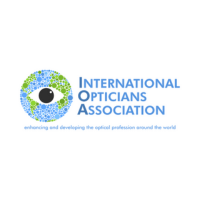General News
New report shows potential to improve cataract surgery outcomes through advanced IOL data reporting
New report shows potential to improve cataract surgery outcomes through advanced IOL data reporting
The Royal College of Ophthalmologists (RCOphth) recommends eye care centres monitor their own data to identify how their use of Intraocular Lenses (IOLs) affects the rate of a post-operative cataract surgical complication known as Posterior Capsular Opacification (PCO).
New analysis of over 600,000 cataract operations suggests that there is considerable potential to reduce PCO and reduce costs. Clinics could take steps to make better informed decisions on procurement, by improving data collection and moving to utilisation of Electronic Medical Records (EMR) across their whole eye service.
Analysis of the RCOphth National Ophthalmology Database (NOD) Cataract Audit dataset – which includes 601,084 cataract operations performed by 2,566 surgeons in 58 eye care centres – revealed vast variation in observed post-cataract PCO rates between different contributing centres and different IOL materials and designs, such as the higher observed PCO rate in IOLs with a hydrophilic component.
The analysis is published today in a report by RCOphth. The authors are Paul Donachie, John Buchan, and John Sparrow. This work was made possible with funding from Alcon, who are supporting the NOD programme.
PCO is a complication which can occur months or years after cataract surgery. PCO occurs when a cloudy layer of scar tissue forms behind the lens implant; this can cause blurred or hazy vision or glare from lights. PCO is estimated to occur in roughly one in five eyes that have cataract surgery and is usually treated by Yttrium Aluminium Garnet (YAG) laser surgery.
Although there were multiple surgical and ocular factors found to influence the risk of PCO YAG, none of these alone can account for the vast variation in observed PCO rates in the report. However, better monitoring of performance of IOLs to reduce complications could result in fewer clinic visits by patients, freeing up resource in the ophthalmic workforce. Fewer YAG capsulotomy surgeries conducted could reduce the current annual £8 million NHS expenditure1 on these corrective procedures and improve patient outcomes.
John Buchan, NOD Cataract Audit Clinical Lead and consultant ophthalmologist, Leeds Teaching Hospitals NHS Trust explains:
“The extent of variation that we found suggests that there could be substantial benefits to patients and to the NHS from further work to identify the IOL’s or other modifiable risk factors that impact PCO rates in individual centres. Reductions in the incidence of PCO YAG could benefit thousands of patients, by avoiding YAG laser surgery thus reducing hospital visits, improving patient outcomes and liberating NHS resources”.
Cataract surgery is the most frequently performed surgical procedure in the UK, with around 472,000 carried out in the NHS (England and Wales). It is also cost effective and highly successful in providing patients with improved quality of life.
The report recommends that individual eye care centres should:
Compare PCO rates for different IOL’s utilised within the same centre to identify IOLs (and other modifiable risk factors) which minimise the rates of PCO.
Investigate measures to improve data collection, including moving to utilisation of EMR across their whole eye service including any community-based follow-up.
Recognise the false economy for NHS providers to opt for less expensive IOLs with higher rates of PCO, given the negative effects on patients (who are often elderly) and the average cost to the NHS of the YAG laser capsulotomy needed to correct PCO.
Key findings:
The overall post-operative one-, three-, and five-year PCO rates in patients for whom follow up data was available were 4.0%, 18.0% & 31.2% respectively.
About half of the centres have a single preferred IOL model which they use in >90% of cases.
The strong association of centres with IOL models coupled with the very large variation in PCO rates between centres, introduces a great deal of uncertainty about the source of variation in the observed PCO rates.
Therefore, this analysis of RCOphth NOD cataract audit data cannot definitively state that any individual IOL put the patient at higher risk of developing PCO.
Consequently, the RCOphth NOD cannot advise changes in clinical practice regarding which IOL to use.
Read the RCOphth Feasibility study of Post-cataract Posterior Capsule Opacification Report 2021























